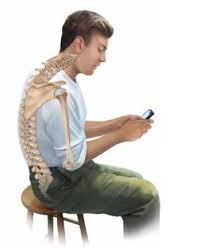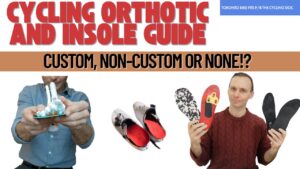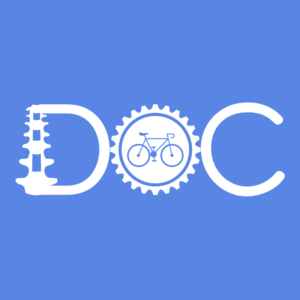Have you ever had a terrible trigger point of pain under, or near your shoulder-blade?
Furthermore, maybe you tried some massage therapy and noticed that there was no amount of work, which relieved it completely.
The answer is likely “yes” but you might not realize that the problem is not a muscle.
It is your spine! You might get told that you have a “rib out” and relief for pain under the shoulder blade will be to address the spine and not one muscle.

If you are a regular chiropractic patient, you likely have had this painful experience, and been informed that you have a “rib out-of-place” or a “rib-out” – this often leads to pain under the shoulder blade.
Patients presenting with rib joint pain is a daily experience for most chiropractors and is one of the easiest complaints to manage. This joint irritation almost always ends with complete symptomatic relief if you correct the underlying problem.
If you have never seen a chiropractor before, I almost guarantee that you have experienced this acutely debilitating experience, but maybe did not know that it was something that could be corrected.
Most doctors don’t know that pain under the shoulder blade involves a rib joint!
In researching this article, and speaking with friends who are medical doctors, I was shocked to hear and read about case studies in which patients are improperly diagnosed. Rather than a proper spinal correction, unnecessary trips to the hospital, tax-burning diagnostic tests, specialist consultations, and higher-risk treatments are utilized instead.
In most cases, the easiest way to rule out the pain as originating from the organs or abdomen is asking the right questions and knowing how to use hands your hands to diagnose.
Next time you experience a rib-out, you will know how and who should care for you. Pain under the shoulder blade that comes from the spine or a more sinister origin should be easily distinguished.
Basic Anatomy Of The Rib Cage And How It Causes Pain Under The Shoulder Blade



There are many types of joint that connect the intricately evolved vertebrae together to form the spine. Your rib cage, whose primary function is to protect your heart, lungs and other vital organs, attaches directly onto the spine the thoracic spine.
The shape, size, and joints formed between the ribs and the spine vary based on their location in the thoracic spine. Some ribs attach to two vertebrae and some to one. Some ribs attach to form one joint with their respective vertebra and others two. Regardless of the variation in anatomy, an irritated joint, also known as a shifted rib, is very painful.
For simplicity’s sake in our discussion, consider that your shifted rib attaches to its respective vertebrae to form two joints. These joints are known as the costotransverse and costovertebral joints, which are differentiated based on the rib’s (costo = rib) connection with the vertebra’s transverse process and vertebral body respectively. For this article, costotransverse + costovertebral joints = rib joint(s).
Both of these joints are similar to the articulation that connect each vertebra together along the length of the spine. They have a blood supply and can be subject to inflammation. They have a nerve supply that tell the brain how they are moving and when something is painful. They are synovial joints that are lined with cartilage, are surrounded by a leathery capsule, which contains synovial fluid. This fluid helps to reduce friction when the head of the rib glides overtop of its respective vertebra to produce motion. Sometimes the move does not glide properly.
What Is An Irritated / SHIFTED Rib?
Textbook: “abnormal mobility and/or a posterior shift of the rib producing a functional disruption between the rib and its two vertebral joints: costovertebral and costotransverse articulation”.
Lay speak: Some mechanism of injury causes an irritation in the rib joint resulting in inflammation, activation of pain nerve fibres, slight backwards movement of the rib in the joint, and the sensation of pain to tell you something is wrong.

In this case, the word shifted can mean both an irritation and inflammation of a joint, and a relative shift of one bone on another in a joint. There is not a dislocation but sometimes a palpable shift within the joint.
What Is An Irritated / SHIFTED Rib?
Rib joints are quietly richly supplied with nerve fibres and thus when either a great deal of inflammation is present or movement is disturbed, pain can be substantial.
Rib pain usually starts with either some sort of blunt trauma to the spine area, a torsion of the torso or prolonged constrained posture like hunching forward over a computer. It is common in a clinical setting for patients to feel a pop, click or pull beside the spine, or under the shoulder-blade when the rib “pops out”.
Let me help by giving you a gift. This is our FREE Posture Self Assessment Tool. It will help you complete a preliminary check to look for Postural Shifts on your own.
Whether it is trauma directly to the joint or prolonged pressure on the joint from poor posture, the strain to the joint results in a combination of joint inflammation and nerve excitement. When these two physiologic processes hit a threshold, pain signals are sent to your conscious brain, muscles in the area contract to stabilize and protect the joint. Without relief, a pain-stiffening cycle is well underway and will continue.
How Do I Know If I Have A Shifted Rib?
Though the pattern of pain can vary along the length of the spine between ribs 1 to 12, the pain usually present as follows.
Onset (<1-3 days):
- Focal and local, dull ache or sharpness, of low to medium intensity
- Localized pain between the spine and the shoulder-blade or underneath the shoulder-blade
- Mild pain with movement of the torso, breathing, pressure on the area

A general present of where rib pain will present. Note that this diagram presents pain patterns for the spine joints but is useful for illustration sake

Prolonged (>1-3 days):
- Focal sharp and/or stabbing pain of high intensity
- The pain can sharply radiate around or through the rib cage to the chest wall
- Dull pain can refer away from the spine (ie into the upper limb, under the shoulder-blade, or around the rib cage)
- Pain with breathing that can limit a deep inspiration
- Pain with movement of the chest, such as with twisting or lateral bending
- Increased heart rate, breathing rate, and other fight or flight symptoms
- Intense sensitivity of the skin juxtaposed to the irritated rib joint
How Do I Know If I Have A Shifted Rib?
These joints are located close to the spine and receive a great deal of pain nerves as previously mentioned. While each rib moves very little and its respective joint provides only finite amounts of bone-on-bone gliding, these joints are forced to move with almost anything challenging the core – this deep breathing.
Whether it is breathing, bending, twisting, or movement of the limbs, these little rib joints have to either move or accept strain onto them, and are thus at risk of being further irritated when in a shifted state.
How Do I Know If I Have A Shifted Rib?
Get it checked by a profession.
Correcting an irritated rib joint is by far the safest, easiest and most cost-effective may to manage the problem in the short-term.
Most rib issues completely resolve immediately, or within hours, and without any lingering discomfort .
The cases in which a rib joint is very irritated and has been for a number of days, generally respond with immediately and substantial relief. These cases might require multiple adjustments in one day or week to help completely alleviate the problem and correct the joint’s function.
The key is to correct the underlying structural changes to the spine that result in this joints becoming frequently irritated. Shifts in the anatomical structure of the spine and rib cage can cause chronic and repetitive shifts in these costovertebral (rib) joints that can impact your health and wellbeing.
Let me help by giving you a gift. This is our FREE Posture Self Assessment Tool. It will help you complete a preliminary check to look for Postural Shifts on your own.
It has been my experience that massage helps incompletely with this issue because it is not a muscle problem. A joint issue requires a therapy that targets the joints – i.e. a NeuroStructural Correction .
Acupuncture can help manage the pain associated with rib issues but does not correct the underlying Core Problem in the joint and spine inself.
If you let it go…

In the 5 case studies described in the Arroyo article cited below, these patients underwent a total of “14 ECG’s, seven chest and spine- X-yas, four isotropic ventilation/perfusion lung scans, two pulmonary angiographies, one cardiac echography and one isotropic bone scan” and were hospitalized for a cumulative “26 days”. All of the cases were treated with lidocaine injections and some patients were unnecessarily prescribed strong medications.
While these cases likely represented serious episodes of rib pain and other causes had to be ruled out, a proper hands-on examination immediately identifies if pain is the result of a shifted rib, or is the result of some other source. To a chiropractor, a rib problem is as obvious as night versus day.
What Postures To Avoid

The best way to irritate a rib seems to be:
- Hunched posture with the shoulders rounding forward
- Prolonged forward reaching, as with a mouse or keyboard
- Continuous use on an outstretched arm, as with painting
- Lifting or holding something with outstretched arms (ie: cradling a heavy child in one arm or lifting a barrel/keg like object

All of these motions require some extent of shoulder-blade protraction. It is my experience that when working with a posture that focuses on keeping the shoulder-blade “back and down” or “tucked into your back pockets”, patients experience fewer rib issues.
How Do I Stop This Problem From Coming Back
- Use good posture as mentioned above
- Avoid activities or movements that require a higher degree of shoulder protraction. This is a HUGE point for mothers and fathers of young infants. Regularly switch the arm you use to cradle your beautiful child and keep him or her, as close to your chest as possible
- Strength the muscles that attach to and control the rib cage
- Most importantly, correct underlying structural changes like anterior spinal shift and postural distortions that put excessive pressure on these joints.
Young BA, Gill HE, Wainner RS, Flynn TW. Thoracic costotransverse joint pain patterns: a study in normal volunteers. BMC musculoskeletal disorders. 2008 Oct 15;9(1):1.
Erwin WM, Jackson PC, Homonko DA. Innervation of the human costovertebral joint: implications for clinical back pain syndromes. Journal of manipulative and physiological therapeutics. 2000 Aug 31;23(6):395-403.
Arroyo JF, Jolliet P, Junod AF. Costovertebral joint dysfunction: another misdiagnosed cause of atypical chest pain. Postgraduate medical journal. 1992 Aug 1;68(802):655-9.





